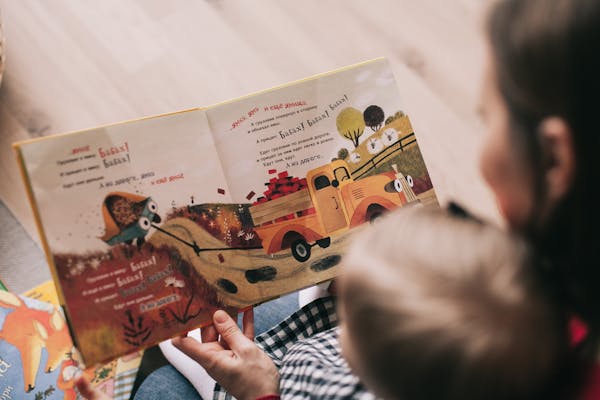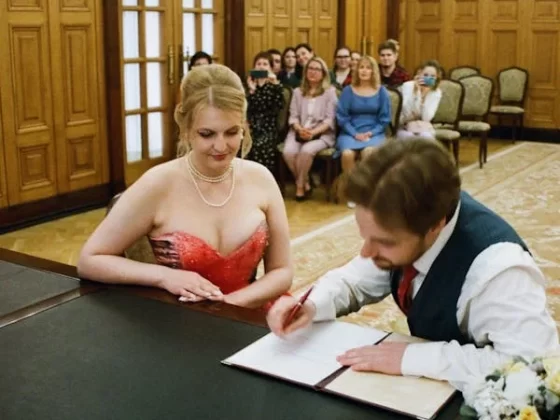
The 1960s were a remarkable era for children’s literature, a time when authors and illustrators weaved enchanting tales that continue to captivate young minds and adults alike. In this journey, we will delve into the 1960s Kid’s Book Guide, the literary time capsules of that decade unearthing the treasures that shaped childhoods. To truly appreciate the magic of these books, it’s essential to understand the cultural and societal context in which they emerged.
The 1960s Kid’s Book Guide:
The Landscape of Children’s Literature in the 1960s
Shifts in Narrative Styles:
The 1960s marked a shift in the way stories were told to young readers. Unlike the didactic and instructional approach of previous decades, authors began to embrace more imaginative storytelling. The focus shifted from teaching moral lessons to sparking young minds with creativity and wonder.
Influential Authors and Their Impact:
The decade saw the emergence of authors whose stories would become classics. Roald Dahl, Madeleine L’Engle, and Maurice Sendak were among those who left an indelible mark on the literary world. Their imaginative narratives not only entertained but also introduced young readers to complex characters and profound themes.
Noteworthy Themes and Trends
Magic and Fantasy:
The 1960s were a time of unprecedented creativity and experimentation in children’s literature. Stories like “Charlie and the Chocolate Factory” and “Where the Wild Things Are” introduced readers to magical worlds filled with whimsical characters and extraordinary adventures. The era nurtured a deep fascination with magic and fantasy.
Social and Cultural Reflections:
Children’s literature of the 1960s didn’t exist in a vacuum; it reflected the societal changes of the time. Books like “A Wrinkle in Time” explored complex topics such as conformity, individuality, and the power of love, making them more than just entertaining tales; they were vehicles for exploring the world around them.
Pioneering Characters and Their Adventures
Iconic Protagonists:
The characters from this era’s books are unforgettable. From the mischievous Charlie Bucket in “Charlie and the Chocolate Factory” to the imaginative Max in “Where the Wild Things Are,” these characters became friends and role models for generations of readers. Their quirks and imperfections made them relatable and endearing.
Unforgettable Journeys:
The adventures embarked upon by these characters are eternally etched in our memories. Whether it’s Lucy stepping through the wardrobe into Narnia or Meg Murry traveling through time and space in “A Wrinkle in Time,” these journeys fired the imaginations of young readers and left them yearning for their adventures.
Influence on Children’s Education and Development
Educational Values in Storytelling:
Children’s literature of the 1960s elevated the process of learning by weaving educational values into engaging narratives. These stories taught important life lessons through the adventures of their characters, helping young readers grow emotionally and intellectually.
Impact on Imagination and Creativity:
The imaginative storytelling and vivid imagery in these books nurtured creativity and innovation in young minds. Readers were encouraged to think outside the box and embrace their unique ideas, a powerful gift that still resonates with generations today.
The beloved children’s books of the 1960s introduced young readers to captivating characters, historical narratives, and enduring tales that have stood the test of time. From evocative illustrations to the bold exploration of diverse themes, these literary gems deftly captured the era’s spirit while imparting timeless messages and lessons that resonate with readers of all ages.
Top Picture Books from the 1960s:
Numerous acclaimed picture books from the 1960s remain beloved by adults, seniors, and young children alike. Authored by renowned children’s writers, many timeless classics have retained their status as bestsellers for decades.
Corduroy
Both author and illustrator Don Freeman introduced an iconic teddy bear character in his 1968 masterpiece, “Corduroy.” In this heartwarming tale, a lovable stuffed bear embarks on a quest through a department store to retrieve a lost button from his attire, yearning to find a child’s love. Recognized by Readers Digest as one of the Best Children’s Books Ever Written, “Corduroy” enchants readers even 50 years after its initial publication. Building on Freeman’s legacy, acclaimed actress Viola Davis recently penned a new adventure for the beloved character, “Corduroy Takes a Bow.”
The Snowy Day
“Ezra Jack Keats’ “The Snowy Day” chronicles Peter’s adventures on a wintry day, captivating children with its story and illustrations, earning the prestigious Caldecott Medal in 1963. Beyond its literary accolades, its groundbreaking portrayal of an African-American protagonist marks a significant milestone in children’s literature, reshaping perspectives and fostering self-identification. Recognized by Time Magazine among the 100 Best Children’s Books of All Time, “The Snowy Day” continues to inspire generations with its timeless charm and cultural significance.”
The Giving Tree
Shel Silverstein’s “The Giving Tree” has captivated audiences for over five decades, becoming a cherished bestseller among children and adults. This timeless tale follows the evolving relationship between a boy and his beloved tree, reflecting themes of giving and love that resonated with the spirit of the 1960s. With its straightforward text and endearing illustrations, the book offers an accessible and enjoyable reading experience for children. Recognized by Time Magazine, USA Today, and Publisher’s Weekly among their top children’s book selections, “The Giving Tree” enchants readers with its enduring charm and universal message.

Best Chapter Books Published in the 1960s:
The top chapter books from the 1960s offer young readers diverse genres, ranging from Madeleine L’Engle’s captivating science fiction to Irene Hunt’s gripping historical fiction. These works feature renowned authors like Beverly Cleary and Roald Dahl, who have become beloved figures among children and young adults alike. Many of these books have been honored with prestigious awards such as the Newbery Medal or Honor. Here’s the top 5 we handpicked for you:
“To Be A Slave”
Though it may not have achieved widespread popularity, Julius Lester’s “To Be a Slave” remains a standout work due to its powerful content. Combining firsthand accounts of slavery with evocative illustrations and supplementary text, this book provides children with a profound understanding of this dark historical period. Recognized with a Lewis Carroll Shelf Award and the 1969 Newbery Honor, “To Be a Slave” is celebrated for its poignant portrayal of the slave experience.
“A Wrinkle in Time”
Madeleine L’Engle’s “A Wrinkle in Time” played a pivotal role in making science fiction more approachable for young readers. Following the journey of the Murry family, especially Meg, as they embark on a quest to find Meg’s missing father, who vanished while experimenting with tesseracts (time wrinkles), the book captivated audiences with its imaginative storyline. Awarded the prestigious Newbery Medal in 1963, it is the inaugural installment in The Time Quintet series. Furthermore, in 2018, the novel was adapted into a highly anticipated major motion picture, further cementing its enduring legacy.
“Charlie and the Chocolate Factory”
Roald Dahl, the beloved author, ignited children’s imaginations with his timeless classic “Charlie and the Chocolate Factory,” released in 1964. Despite Charlie’s humble beginnings in a low-income family, he seizes the extraordinary opportunity to explore the enigmatic chocolate factory owned by the eccentric Willy Wonka. Esteemed by the BBC as one of the most outstanding children’s books, this enchanting tale has been immortalized in two cinematic adaptations, one starring the iconic Gene Wilder and the other featuring renowned actor Johnny Depp.
“The Mouse and the Motorcycle”
Beverly Cleary’s “The Mouse and the Motorcycle” chronicles the escapades of Ralph, an adventurous mouse constantly seeking excitement. This charming narrative has garnered recognition as an ALA Notable Book and secured a place among School Library Journal’s Top 100 Children’s Novels. Additionally, it served as inspiration for a short film adaptation. Cleary’s remarkable storytelling earned her the esteemed Children’s Literature Legacy Award in 1975, celebrating her enduring contributions to children’s literature.
“The Egypt Game”
Zilpha Keatley Snyder’s “The Egypt Game,” released in 1967, brings a modern mystery to young readers. April Hall and Melanie Ross bond over their passion for imagination and ancient Egyptian history, establishing a club where they transform an abandoned lot into a captivating ancient Egyptian realm. The book was recognized for its compelling narrative and received the prestigious Newbery Honor Award in 1968.
Enduring Legacy and Timeless Appeal
The Perpetual Allure:
The books of the 1960s continue to captivate new generations of readers. Their timeless themes, relatable characters, and imaginative storytelling ensure that these literary treasures remain as relevant and beloved today as they were when first published.
Multigenerational Impact:
These stories are often passed down from one generation to the next, creating a shared bond through the generations. Grandparents, parents, and children alike find common ground in the pages of these classic books, making them an integral part of family traditions.
Notable Publishers and their Contributions
Powerhouses in Children’s Literature:
Several publishing giants played a pivotal role in shaping the literary landscape of the 1960s. Publishers like Harper & Row, Random House, and Puffin Books introduced young readers to groundbreaking stories and innovative approaches to storytelling that would stand the test of time.
Innovative Approaches to Storytelling:
These publishers not only published extraordinary books but also embraced innovative techniques in children’s literature. From the use of vivid illustrations to interactive narratives, they pushed the boundaries of traditional storytelling.
Evolving Art and Illustration Styles
Visual Aesthetics of the ’60s:
The art and illustrations in children’s books from the 1960s reflected the era’s visual aesthetic. Bright, bold, and often whimsical, the artwork added a layer of depth and magic to the stories, enhancing the reading experience.
Impact on Visual Literacy:
The fusion of art and literature in these books encouraged visual literacy, a skill that remains invaluable today. Readers learned to interpret and appreciate the visual elements of storytelling, which is essential in our increasingly visual world.

Beyond Borders: Global Impact
International Recognition and Translation:
The appeal of 1960s children’s books wasn’t limited to a single country. Many of these classics were translated into multiple languages, making them accessible to young readers worldwide. The universal themes and enchanting narratives transcended cultural boundaries.
Cultural Influence and Adaptations:
Different cultures interpreted and adapted these stories in their unique ways. This cultural diversity added to the richness of the stories, allowing readers from various backgrounds to find a piece of themselves in these beloved tales.
Conclusion:
The 1960s marked a pivotal moment in children’s literature, where storytelling evolved from mere instruction to captivating, imaginative narratives. These timeless classics continue to shine through the ages, leaving a legacy of imagination and wisdom that enriches the lives of readers, both young and old. They remind us that the magic of a good story knows no bounds, transcending time and generations.














